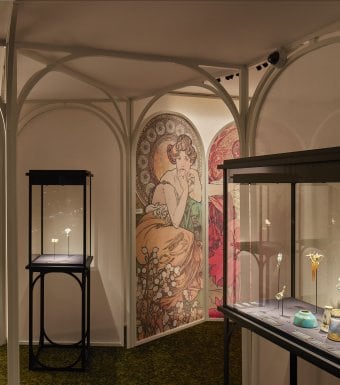How familiar are you with Art Nouveau? A movement as short-lived as it was influential, Art Nouveau left its mark on the late nineteenth and early twentieth centuries. The singular creations it inspired were the fruit of a passionate dialogue between the worlds of art, science, and nature. This talk takes a closer look at the unprecedented exhibition organized by L’ÉCOLE, School of Jewelry Arts in Paris featuring the movement’s radical aesthetic evolution.
[Video] A New Art. Metamorphoses of Jewelry, 1880-1914
The turn of the century was a time of extraordinary creative impetus fueled by the spread of scientific knowledge. Breakthroughs in botany nourished a fascination for living things that artists confronted with the ancient theme of metamorphoses in works such as the winged female figures of René Lalique (1860-1945) and the marine life depictions of Maurice Pillard Verneuil (1869-1942).
Fantastical creatures and realms often tinged with symbolism abounded, inspired by fanciful bestiaries and real or imagined elements of nature. Hybrid, occasionally even monstruous creatures called for a new range of materials including baroque pearls, horn, and enamel.
These novel interpretations of nature also brought poetry to the world, as this talk will reveal in a selection of remarkable works from the hundred pieces on loan from highly prestigious institutions, among them the Musée Lalique in Wingen-sur-Moder, the Musée des Arts Décoratifs and the Musée d’Orsay in Paris, and the Schmuckmuseum in Pforzheim, Germany, as well as from the exceptional private collection of Albion Art.
With Inezita Gay-Eckel, Jewelry Historian and Lecturer at L’ÉCOLE, School of Jewelry Arts & Paul Paradis, Art Historian and Lecturer at L’ÉCOLE, School of Jewelry Arts.

